First of all, for those of you who are not aware of what "Equal points for equal work" is I suggest you read this post by Dr. Pande:
http://folding.typepad.co...ts-for-equal-work.html The short version is, starting with Core 17, CPU and GPU clients are theoretically capable of processing the same WUs. This means that the benchmarking method for both types of clients should be the same.
However, as many of you may have have noticed, this does not seem to be what is actually happening. The problem with testing this claim has been a lack of a unified way to test the performance of CPU and GPU clients. FAHBench is the answer to this, because it is based on the same OpenCL code as Core 17. Since FAHBench uses OpenCL, it is possible to benchmark both clients. To do this, I installed the Intel OpenCL SDK in order to get OpenCL support on my CPU.
I ran FAHBench on my i7 3930K @ 4.6GHz and my GTX Titan @ 1045MHz. Clock speeds on both were constant throughout the tests.
i7 3930K:
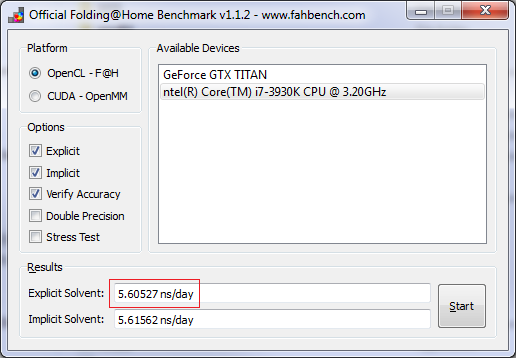
GTX Titan:
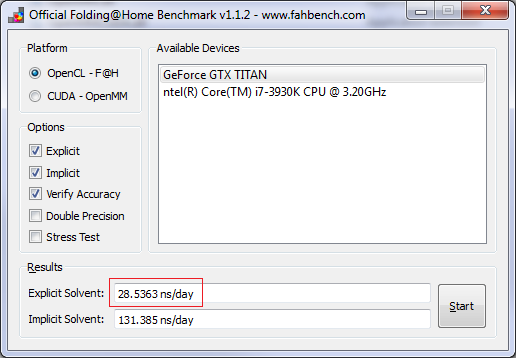
Now, the results to pay attention to are the "Explicit Solvent" ones. As far as I know, all the CPU/SMP WUs use an Explicit Solvent model, so this is the number that will matter when comparing CPUs to GPUs.
So the GTX Titan is just over 5 times faster than the i7 3930K in the Explicit Solvent test. But what does this mean in real world PPD? To answer that, I started up the SMP client on the i7 3930K and let it run for several minutes without doing anything else on the computer.
FAHControl SS:

So in the case of P6350, I get a TPF of 39 seconds. Putting that value into the SMP2 bonus points calculator gives a PPD of 47,545:
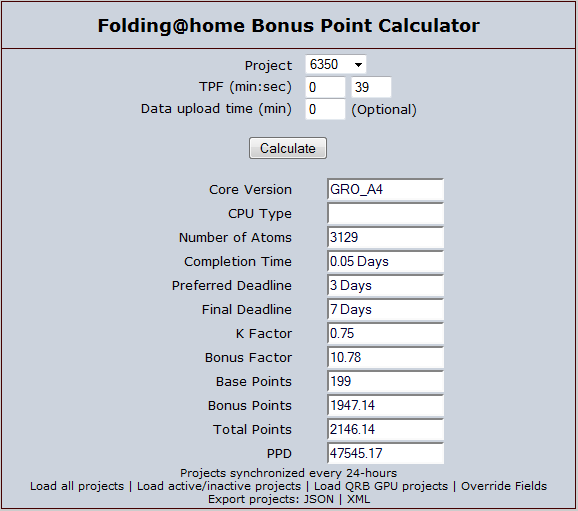
So what would happen if this same WU was run on the GTX Titan instead of the i7 3930K? Well, to estimate this I need to make a couple assumptions:
1. P6350 uses an Explicit Solvent model.
2. Core A4 and FAHBench (Core 17) perform the same on the i7 3930K* The problem with #2 is that the code being run on the CPU via OpenCL is likely to be far less optimized than the code used for Core A4. Things like assembly optimizations are not possible with OpenCL.
For the purposes of this test, I am going to assume that Core A4 is twice as fast on the i7 3930K compared to FAHBench. (Core 17) This is an estimation only, and if anyone from PG has more accurate data concerning this it would be useful.
With that taken into account, the performance improvement of the GTX Titan over the i7 3930K becomes:
(28.5363) / (2 * 5.60527) =
2.55 times faster Now, if we apply that performance difference to P6350 we get a new
TPF of 15.29 seconds. I will round this down to 15 seconds because of the limitations of the bonus points calculator.
The calculated PPD is now 199,327!
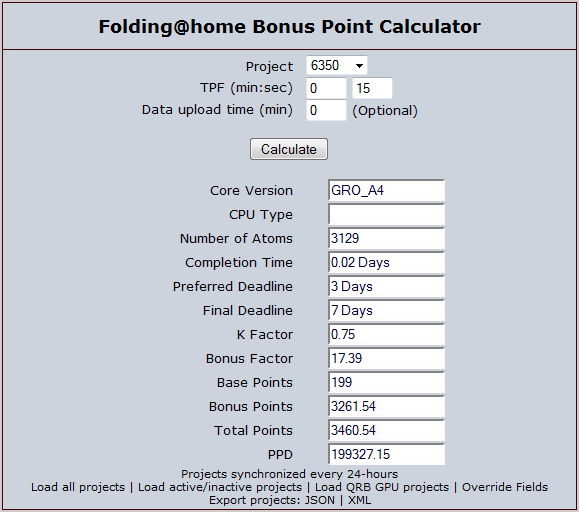
This is close to what we were getting with the GPU QRB WUs last year. However, none of the current Core 17 WUs come remotely close to this. For reference, here is a screenshot of my GTX Titan running a P7662:
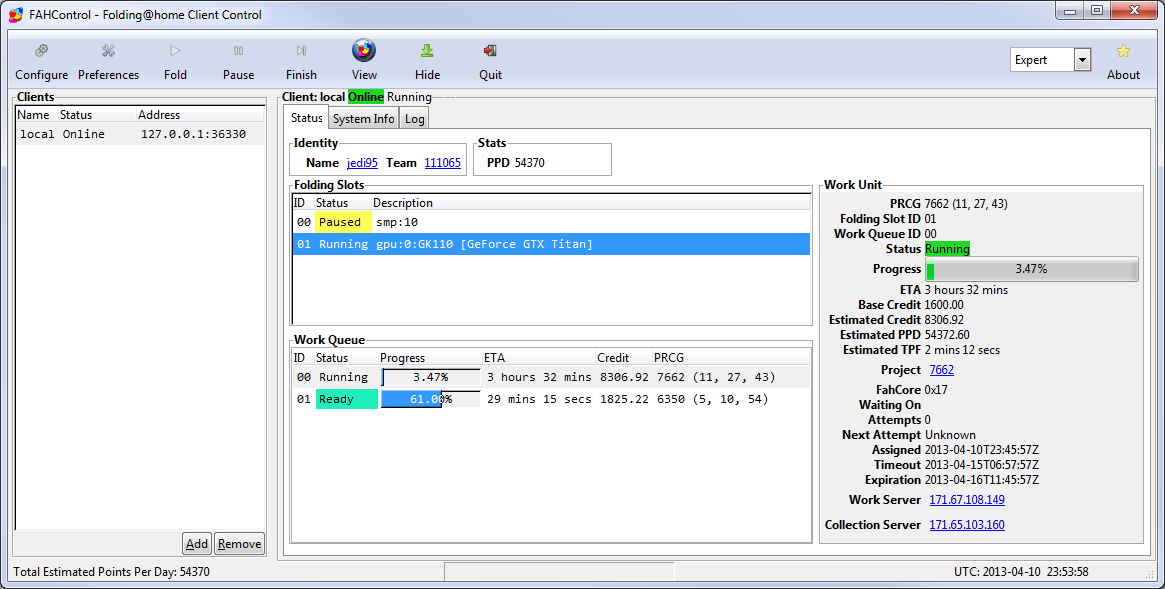
With a TPF of 2:12 and PPD of 54,373 this is not even close to the predicted PPD.
So what does all this mean?
Unless the OpenCL based Core 17 is really 4-5 times slower than Core A4 on the i7 3930K, we are most certainly not getting "Equal Points for Equal work" with P7662 and Core 17. The PPD we were seeing last year with the Core 15 + QRB WUs was much closer. Hopefully PG will realize this and correct the points for P7662 when it comes out of beta.
NOTE:
If you notice any mistakes or factors that I am not taking into account please point it out.
post edited by jedi95 - Thursday, April 11, 2013 0:04 PM